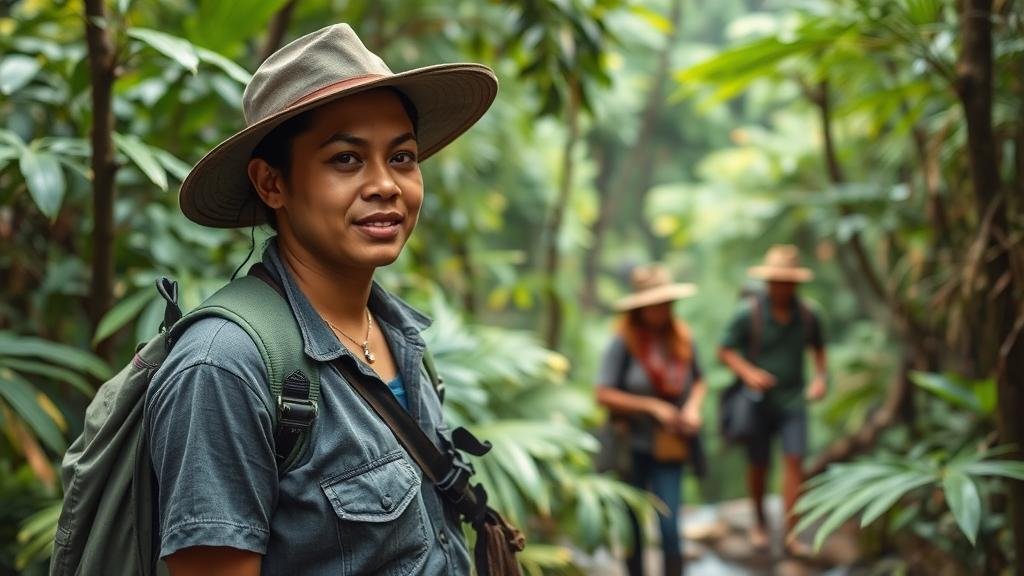The role of indigenous guides in navigating dense jungle environments.
The Role of Indigenous Guides in Navigating Dense Jungle Environments
In the intricate web of the worlds ecosystems, few areas pose as many challenges to navigation as dense jungles. The overwhelming diversity of flora and fauna, coupled with the complex terrain and aggressive weather conditions, makes these environments formidable for even the most seasoned adventurers. But, throughout history, indigenous guides have proven indispensable in successfully traversing these lush landscapes. r unique knowledge and skills not only facilitate safe passage but also enhance the experience through cultural and ecological insights.
Historical Context of Indigenous Guiding Practices
The tradition of utilizing indigenous guides can be traced back centuries, with many cultures developing profound relationships with their surrounding environments. For example, in the Amazon rainforest, indigenous tribes such as the Yanomami and Ticuna have navigated this biodiverse habitat for generations, employing techniques that have been passed down through oral traditions.
The Amazon, covering approximately 5.5 million square kilometers across countries like Brazil, Peru, and Colombia, contains vast networks of rivers and vegetation. Indigenous guides possess an intimate understanding of these ecosystems, knowing not only the pathways but also the seasonal changes that affect travel conditions. According to a study by the WWF, indigenous territories in the Amazon are home to over 400 billion trees, showcasing the incredible biodiversity that guides are intimately familiar with.
Skills and Knowledge of Indigenous Guides
The expertise of indigenous guides is multi-faceted, encompassing various skills essential for surviving and navigating dense jungles:
- Navigation Techniques: Indigenous guides employ techniques such as creating mental maps based on terrain features, star positions, and environmental cues like wind and animal behaviors.
- Flora and Fauna Identification: They can identify edible and medicinal plants, as well as animals, which is crucial for sustaining life during extended expeditions.
- Weather Prediction: With a keen eye for subtle changes in the environment, indigenous guides can forecast weather patterns, helping adventurers avoid dangerous storms.
For example, the richness of the Amazon rainforest is reflected in the loss of knowledge that occurs when traditional practices are not recognized. A study published in the journal Ecological Applications in May 2020 highlighted how indigenous knowledge significantly enhances biodiversity conservation efforts, revealing that areas managed by indigenous peoples have lower rates of deforestation compared to other regions.
Real-World Applications
Today, the role of indigenous guides extends beyond mere navigation; they are vital partners in conservation and cultural heritage projects. For example, in Madagascar, indigenous communities are working alongside scientists to protect unique ecosystems while leading ecotourism ventures. Such collaborations not only empower local communities but also provide tourists with authentic experiences that deepen their understanding of the environment.
Also, as international interest in sustainable tourism grows, travelers are increasingly seeking out experiences that include indigenous guides. Notable organizations such as the Global Indigenous Tourism Network promote responsible travel methods that benefit both tourists and indigenous communities.
Addressing Challenges and Concerns
Despite the clear benefits, several challenges confront indigenous guiding practices. Tourist misuse of indigenous knowledge, environmental degradation, and cultural appropriation are ongoing concerns that impact these communities.
To address these issues, it is crucial for travelers to:
- Understand and respect the cultural traditions of indigenous peoples.
- Engage in sustainable tourism practices that contribute to local economies.
- Support initiatives that protect indigenous rights and advocate for proper compensation and recognition.
For example, programs like the Community-Based Tourism initiative in Costa Rica empower indigenous people to share their knowledge while ensuring that they benefit financially from tourism without compromising their cultural integrity.
Conclusion: The Future of Indigenous Guiding
As the world increasingly turns to indigenous guides for navigating dense jungles, it is a critical moment to acknowledge and respect their contributions. By embracing indigenous knowledge and addressing the associated challenges, we not only enhance the safety and richness of our jungle explorations but also foster meaningful relationships with the custodians of these environments.
Ultimately, engaging with indigenous guides provides a deeper connection to the natural world, bridging the gap between adventure and stewardship. Tourists, researchers, and locals alike stand to benefit from this collaboration, creating pathways that are not only physically navigable but also filled with reverence for the rich tapestry of human and ecological history.



